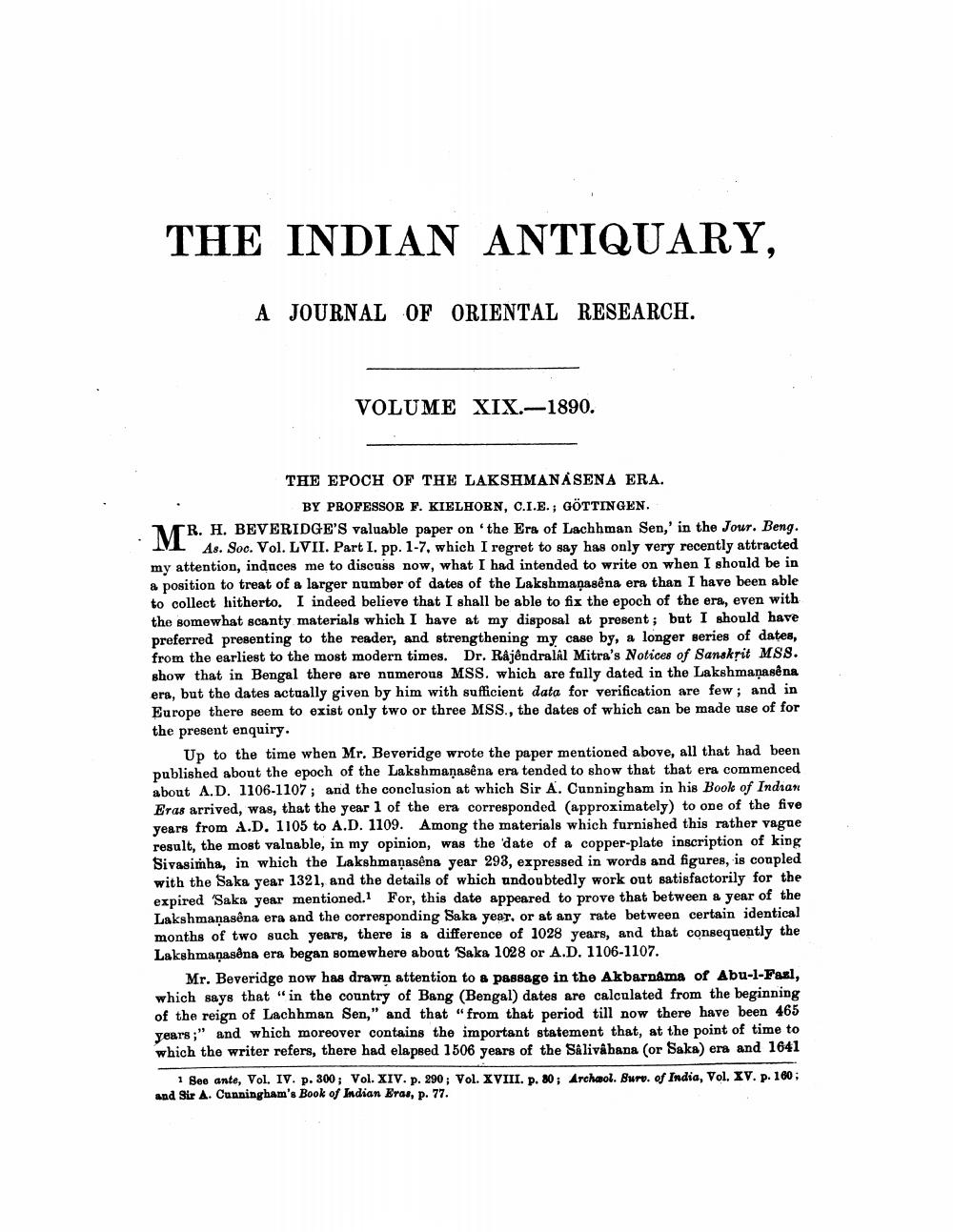Book Title: Indian Antiquary Vol 19 Author(s): John Faithfull Fleet, Richard Carnac Temple Publisher: Swati Publications View full book textPage 7
________________ THE INDIAN ANTIQUARY, A JOURNAL OF ORIENTAL RESEARCH. VOLUME XIX.-1890. THE EPOCH OF THE LAKSHMANÅSENA ERA. BY PROFESSOR F. KIELHORN, C.L.E.; GÖTTINGEN M R. H. BEVERIDGE'S valuable paper on the Era of Lachhman Sen,' in the Jour. Beng. M As. Soc. Vol. LVII. Part I. pp. 1-7, which I regret to say has only very recently attracted my attention, induces me to discuss now, what I had intended to write on when I should be in a position to treat of a larger number of dates of the Lakshmaņasêna era than I have been able to collect hitherto. I indeed believe that I shall be able to fix the epoch of the era, even with the somewhat scanty materials which I have at my disposal at present; but I should have preferred presenting to the reader, and strengthening my case by, a longer series of dates, from the earliest to the most modern times. Dr. Rajendralal Mitra's Notices of Sanskrit M88. show that in Bengal there are numerous MSS. which are fully dated in the Lakshmaņasêna era, but the dates actually given by him with sufficient data for verification are few; and in Europe there seem to exist only two or three MSS., the dates of which can be made use of for the present enquiry. Up to the time when Mr. Beveridge wrote the paper mentioned above, all that had been published about the epoch of the Lakshmanasena era tended to show that that era commenced about A.D. 1106-1107; and the conclusion at which Sir A. Cunningham in his Book of Indian Eras arrived, was, that the year 1 of the era corresponded (approximately) to one of the five years from A.D. 1105 to A.D. 1109. Among the materials which furnished this rather vague result, the most valuable, in my opinion, was the date of a copper-plate inscription of king Sivasimha, in which the Lakshmanasêne year 293, expressed in words and figures, is coupled with the Saka year 1321, and the details of which undoubtedly work out satisfactorily for the expired 'Saka year mentioned. For, this date appeared to prove that between a year of the Lakshmanasêna era and the corresponding Saka year, or at any rate between certain identical months of two such years, there is a difference of 1028 years, and that consequently the Lakshmaņasəna era began somewhere about Saka 1028 or A.D. 1106-1107. Mr. Beveridge now has drawn attention to & passage in the Akbarnáms of Abu-l-Farl, which says that "in the country of Bang (Bengal) dates are calculated from the beginning of the reign of Lachhman Sen," and that "from that period till now there have been 465 years;" and which moreover contains the important statement that, at the point of time to which the writer refers, there had elapsed 1506 years of the Salivahana (or Saka) era and 1641 1 Bee ante, Vol. IV. p. 300; Vol. XIV. p. 290; Vol. XVIII. p. 80; Archaol. Buro. of India, Vol. XV. p. 160; and Sir A. Cunningham's Book of Indian Eras, p. 77.Page Navigation
1 ... 5 6 7 8 9 10 11 12 13 14 15 16 17 18 19 20 21 22 23 24 25 26 27 28 29 30 31 32 33 34 35 36 37 38 39 40 41 42 43 44 45 46 47 48 49 50 51 52 53 54 55 56 57 58 59 60 61 62 63 64 65 66 67 68 69 70 71 72 ... 510
